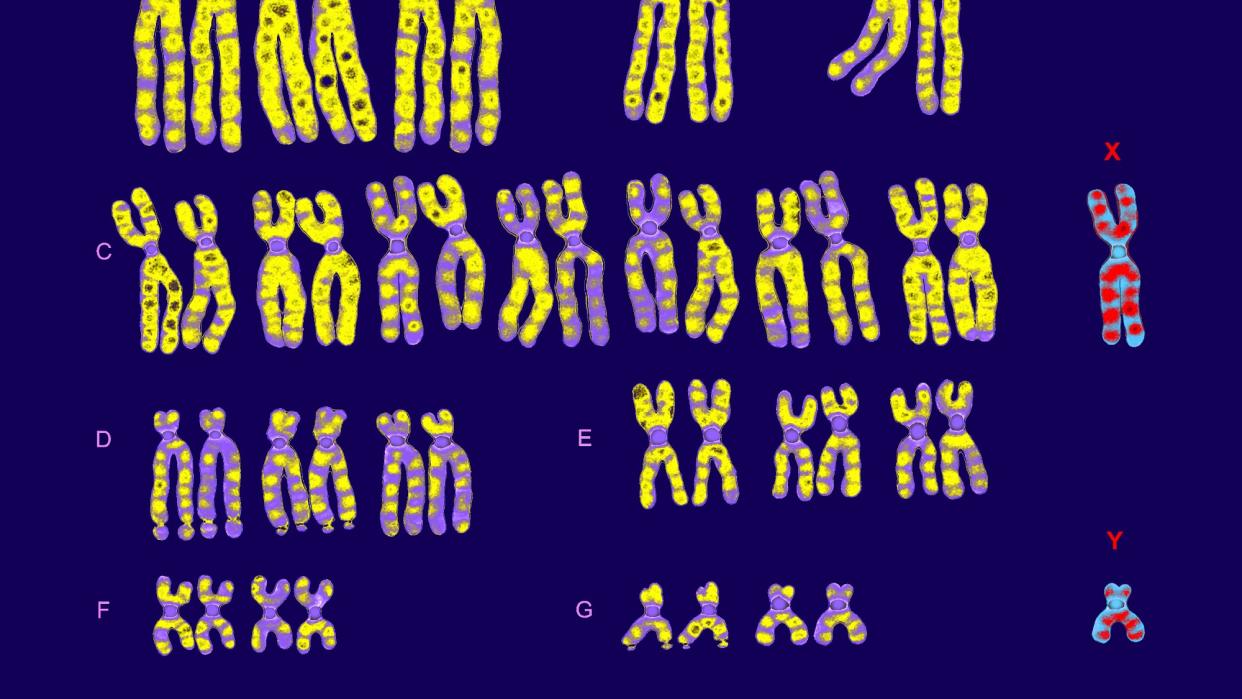Why the Y chromosome is vanishing and what this means for the future

The biological sex of a human being is determined by which chromosomes make up that baby's genetic material. Females usually have two X chromosomes, while males tend to have one X and one Y chromosome. But research suggests that the Y chromosome has been rapidly degenerating over the course of our evolution. In fact, the gene may one day disappear altogether.
Why is the Y chromosome disappearing?
The Y chromosome has seen significant changes over the course of human evolution. Within the past 166 million years, "the human Y lost most of its 1,600-odd genes, a rate of nearly 10 per million years," The Conversation said. The X chromosome contains approximately 900 genes with multiple functions, whereas the Y has approximately 55 genes with only 27 of them being male-specific. In addition, "many are present in multiple copies, most of them inactive, lying in giant loops of DNA. Most of the Y is made of repetitive 'junk DNA.'" With such an unstable composition, the Y chromosome is at risk of completely disappearing over the course of multiple generations.
"The early 'proto-Y' chromosome was originally the same size as the X chromosome and contained all the same genes," The Conversation said. However, because males only have one copy of the chromosome, it does not have the opportunity to go through genetic recombination, which is the "shuffling of genes that occurs in each generation which helps to eliminate damaging gene mutations." Without recombination, Y chromosomal genes degenerate over time. "The Y chromosome has degenerated rapidly, leaving females with two perfectly normal X chromosomes, but males with an X and a shriveled Y."
What are the implications?
The most important part of the Y chromosome is the master sex gene called SRY, which triggers a fetus' development as a male. "The Y makes no sense in terms of function, but is easy to understand in terms of evolution," Jenny Graves, a sex chromosome geneticist at La Trobe University in Melbourne, said to Newsweek. "The X and Y were once upon a time just an ordinary pair of chromosomes. Then one partner acquired a variant gene (SRY) that determines maleness." So what happens if the Y disappears? "When humans run out of Y chromosome, they might become extinct (if we haven't already extincted ourselves long since), or they might evolve a new sex gene that defines new sex chromosomes," Graves said. Rest assured, this type of evolution will take millions of years.
A 2022 study published in the journal PNAS found that the important Y chromosome genes could be capable of relocating to other genes, as observed in mice. There is also the possibility that humans develop a whole new sex gene. "A 'war' of the sex genes could lead to the separation of new species, which is exactly what has happened with mole voles and spiny rats," The Conversation said. "If someone visited Earth in 11 million years, they might find no humans — or several different human species, kept apart by their different sex determination systems."
Some experts firmly believe that the Y chromosome will not disappear at all, claiming that it has several defense mechanisms in place. A 2017 study published in the journal PLOS Genetics said the chromosome's evolution of palindromes — DNA sequences that read the same forward as backward — and repetitive copies of genes could keep it from degrading faster by allowing "damaged genes to be repaired using an undamaged back-up copy as a template."

